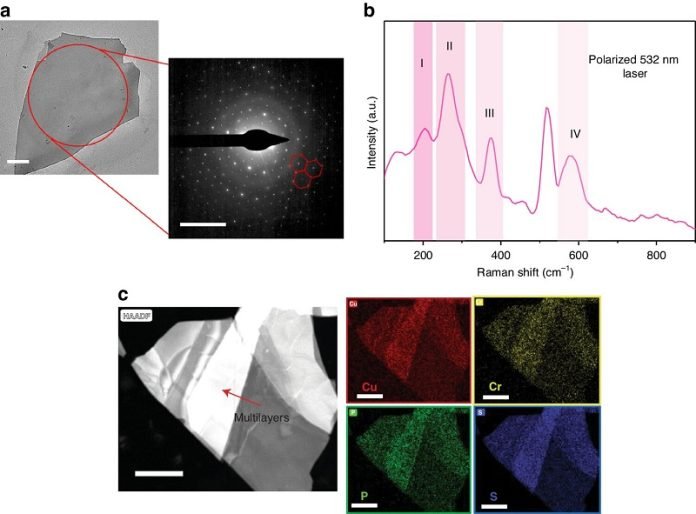
Researchers at NYU Abu Dhabi’s Photonics Research Lab have developed a new two-dimensional (2D) material that can control light with incredible precision and very little loss of signal.
This innovation could significantly improve communication networks and advanced optical systems, making them more efficient and capable of handling greater data bandwidth.
In the realm of optoelectronics—devices that create, detect, and manage light—controlling the optical properties of materials is key to unlocking new technological applications.
These include faster internet speeds and more precise environmental sensors.
Traditional materials like Transition Metal Dichalcogenides (TMDs) and graphene are known for their ability to respond well to light and other external stimuli.
However, they often struggle to modulate light effectively in the short-wave infrared (SWIR) region without losing signal quality and while maintaining a small size.
The breakthrough, detailed in a paper titled “Electro-Optic Tuning in Composite Silicon Photonics Based on Ferroionic 2D Materials” in the journal Light: Science & Applications, describes how the team led by Ghada Dushaq and Mahmoud Rasras at NYU Abu Dhabi used a new 2D material called CuCrP2S6 (CCPS) to overcome these challenges.
They engineered atomically thin layers of this material into tiny ring structures on silicon chips, enhancing the device’s efficiency and compactness.
These 2D materials, when applied to silicon optical devices, enable precise tuning of the optical properties—like the refractive index—of the light signals passing through them.
This means the light can be manipulated without losing intensity, which is crucial for applications where light sensitivity is essential.
Mahmoud Rasras, Associate Professor of Electrical Engineering and Director of the PRL Lab, highlighted the potential of this technology in various fields. “This innovation offers precise control over the refractive index while simultaneously minimizing optical losses. It enhances modulation efficiency and reduces the device’s size, making it suitable for next-generation optoelectronics,” he said.
The applications for this new material are broad and exciting. They range from environmental sensing, which could benefit from more precise data collection, to advanced optical imaging systems that require accurate light manipulation.
Additionally, the material could play a crucial role in neuromorphic computing, a type of computing that mimics the human brain’s neural architecture, particularly in light-sensitive artificial synapses used for learning and memory.
This development marks a significant step forward in the manipulation of light at the microscopic level and opens up numerous possibilities for improving the performance and efficiency of modern technological devices.



